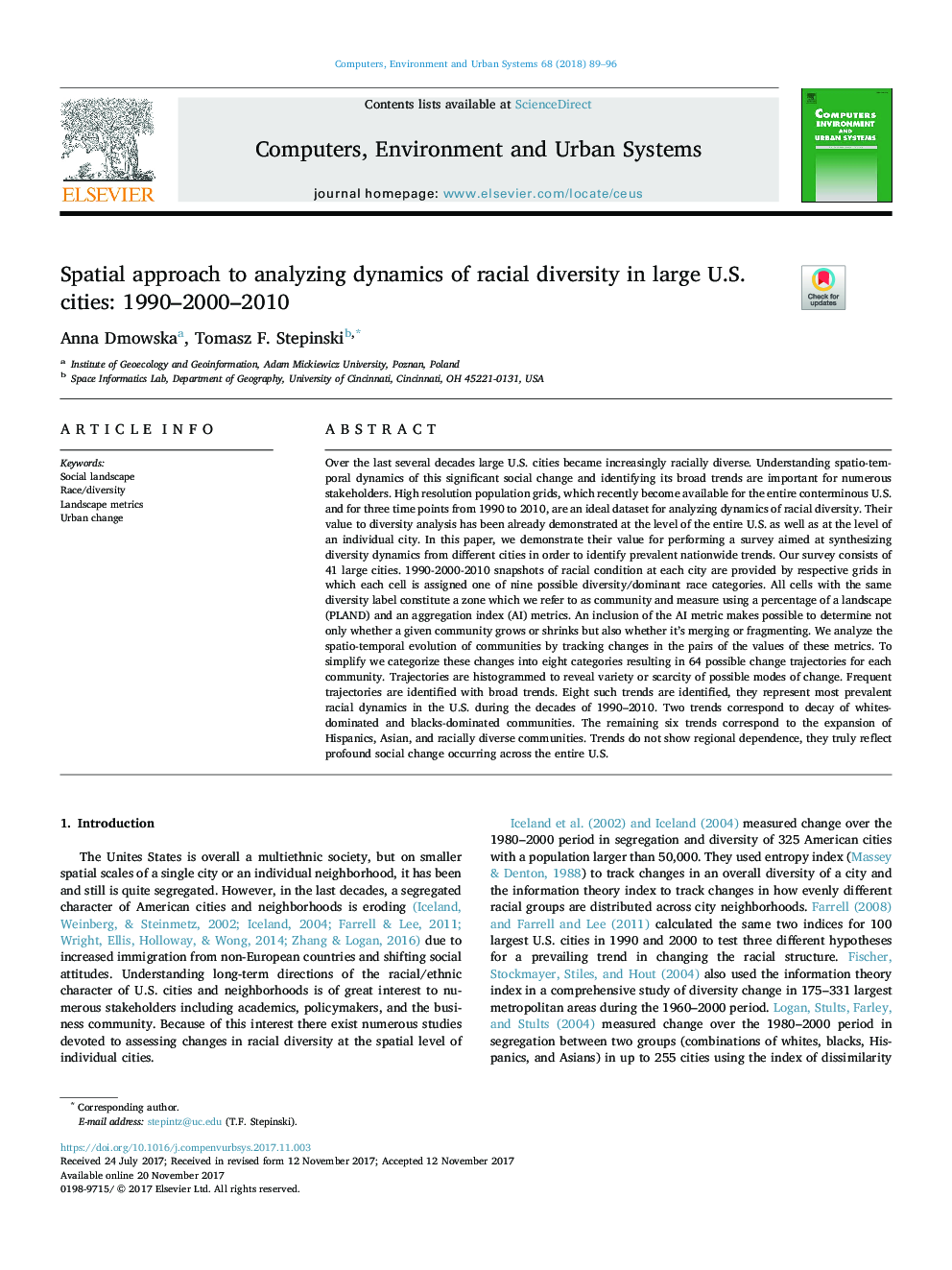| کد مقاله | کد نشریه | سال انتشار | مقاله انگلیسی | نسخه تمام متن |
|---|---|---|---|---|
| 6921872 | 1448222 | 2018 | 8 صفحه PDF | دانلود رایگان |
عنوان انگلیسی مقاله ISI
Spatial approach to analyzing dynamics of racial diversity in large U.S. cities: 1990-2000-2010
ترجمه فارسی عنوان
رویکرد فضایی برای تحلیل پویایی تنوع نژادی در شهرهای بزرگ ایالات متحده: 1990-2000-2010
دانلود مقاله + سفارش ترجمه
دانلود مقاله ISI انگلیسی
رایگان برای ایرانیان
کلمات کلیدی
چشم انداز اجتماعی، مسابقه / تنوع معیارهای چشم انداز، تغییر شهری،
موضوعات مرتبط
مهندسی و علوم پایه
مهندسی کامپیوتر
نرم افزارهای علوم کامپیوتر
چکیده انگلیسی
Over the last several decades large U.S. cities became increasingly racially diverse. Understanding spatio-temporal dynamics of this significant social change and identifying its broad trends are important for numerous stakeholders. High resolution population grids, which recently become available for the entire conterminous U.S. and for three time points from 1990 to 2010, are an ideal dataset for analyzing dynamics of racial diversity. Their value to diversity analysis has been already demonstrated at the level of the entire U.S. as well as at the level of an individual city. In this paper, we demonstrate their value for performing a survey aimed at synthesizing diversity dynamics from different cities in order to identify prevalent nationwide trends. Our survey consists of 41 large cities. 1990-2000-2010 snapshots of racial condition at each city are provided by respective grids in which each cell is assigned one of nine possible diversity/dominant race categories. All cells with the same diversity label constitute a zone which we refer to as community and measure using a percentage of a landscape (PLAND) and an aggregation index (AI) metrics. An inclusion of the AI metric makes possible to determine not only whether a given community grows or shrinks but also whether it's merging or fragmenting. We analyze the spatio-temporal evolution of communities by tracking changes in the pairs of the values of these metrics. To simplify we categorize these changes into eight categories resulting in 64 possible change trajectories for each community. Trajectories are histogrammed to reveal variety or scarcity of possible modes of change. Frequent trajectories are identified with broad trends. Eight such trends are identified, they represent most prevalent racial dynamics in the U.S. during the decades of 1990-2010. Two trends correspond to decay of whites-dominated and blacks-dominated communities. The remaining six trends correspond to the expansion of Hispanics, Asian, and racially diverse communities. Trends do not show regional dependence, they truly reflect profound social change occurring across the entire U.S.
ناشر
Database: Elsevier - ScienceDirect (ساینس دایرکت)
Journal: Computers, Environment and Urban Systems - Volume 68, March 2018, Pages 89-96
Journal: Computers, Environment and Urban Systems - Volume 68, March 2018, Pages 89-96
نویسندگان
Anna Dmowska, Tomasz F. Stepinski,
